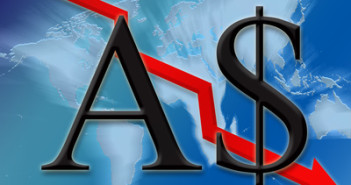The Australian dollar continued remaining in high ground, but it certainly lost its shine. The good figures from China, as seen in a healthy GDP report and an excellent manufacturing PMI reported by HSBC, have not helped the Australian dollar.
The Aussie also lost its shine as a “risk on” currency. Good news from Europe used to help the A$ in the past, as money was seeking risk and high yields. This correlation seems to have been broken.
* This article is part of the February 2013 monthly forex report. You can download the full report by joining the newsletter in the form below.
The talk about “the end of the mining boom” hurt the Aussie in the past, and now they have less impact: commodity prices have been on the rise again, but this doesn’t really boost the Aussie.
The biggest issues for Australia now come from within:
- Retail sales disappointed with a drop of 0.1% after remaining flat. Australian consumers are quite reluctant to buy.
- Housing: Quite a few developers are offering various “incentives” or “programs” to encourage buying of new homes. These are price cuts in disguise, and they point to some distress in the housing sector. Building approvals have disappointed as well.
- Manufacturing: PMIs from the Australian Industry Group (AIG) remain well below the 50 point line separating growth from contraction. The latest was quite discouraging: a drop to only 40.2 points.
- Trade balance deficit: Australia’s trade deficit grew from 2.44 to 2.64 billion, instead of squeezing – this isn’t positive for the currency of an export-oriented nation.
- Less Swiss help: The Swiss National Bank used to diversify its foreign exchange reserves from euros to other currencies, with the Aussie being one of their favorites. It is unclear if the SNB is selling A$ or just rebuying its own currency now that the situation has changed. But in any case, the Aussie isn’t supported.
A notable fact that helps the Aussie is the lack of participation in currency wars: the RBA has no QE programs (US, UK, Japan and the ECB to some extent) nor is it intervening in the value (Japan, Switzerland). Without such activity, the Aussie is still supported.
The tool that the RBA does have is its interest rate: at the post crisis low of 3%, the RBA still has room to cut. No cut is expected for February, but the RBA tends to surprise its watchers, more than other central banks. Hints of a future cut could certainly come during the month.
All in all, the negative trends aren’t likely to reverse in February, and the value of the currency might reflect the weakness more than earlier.
